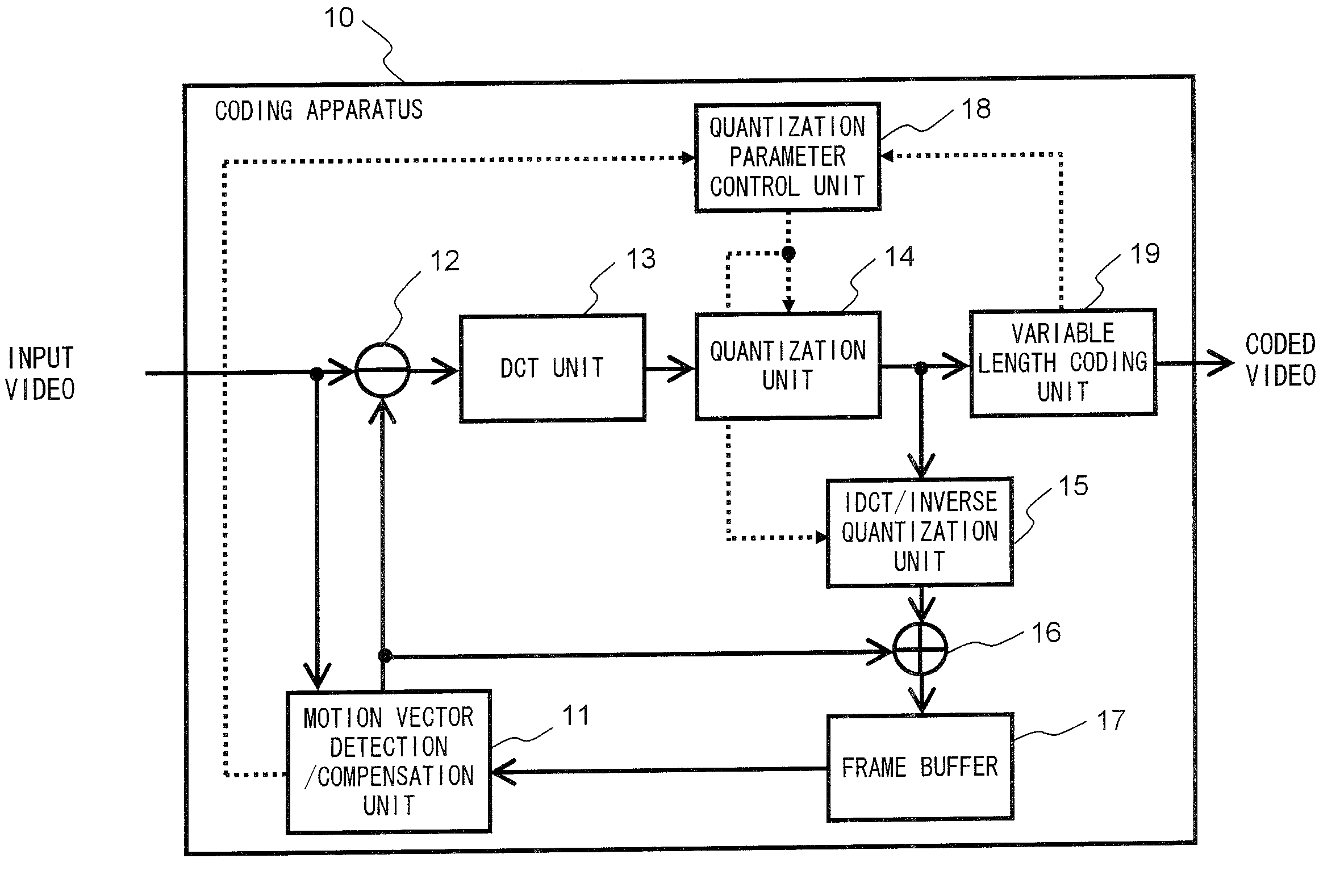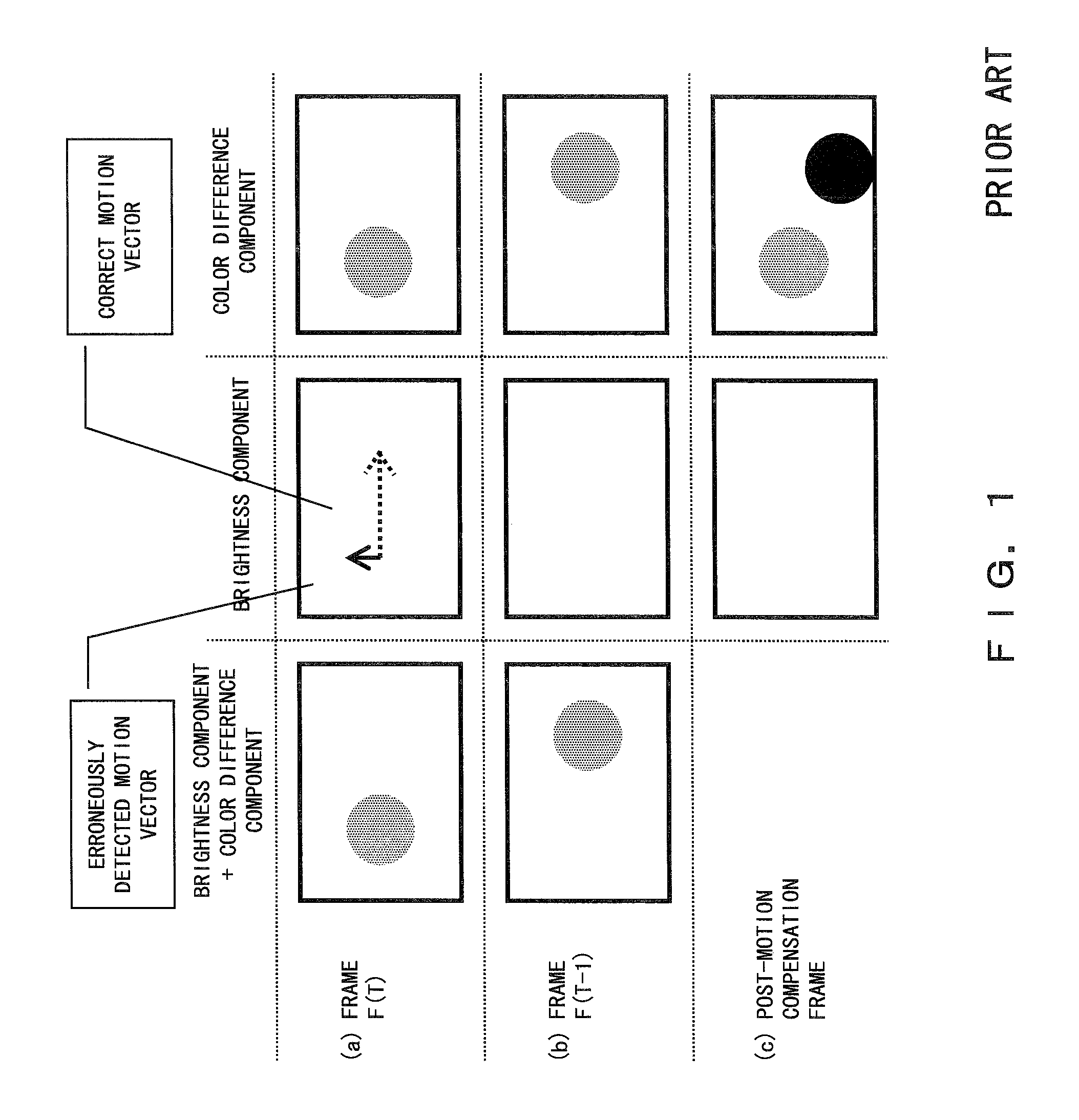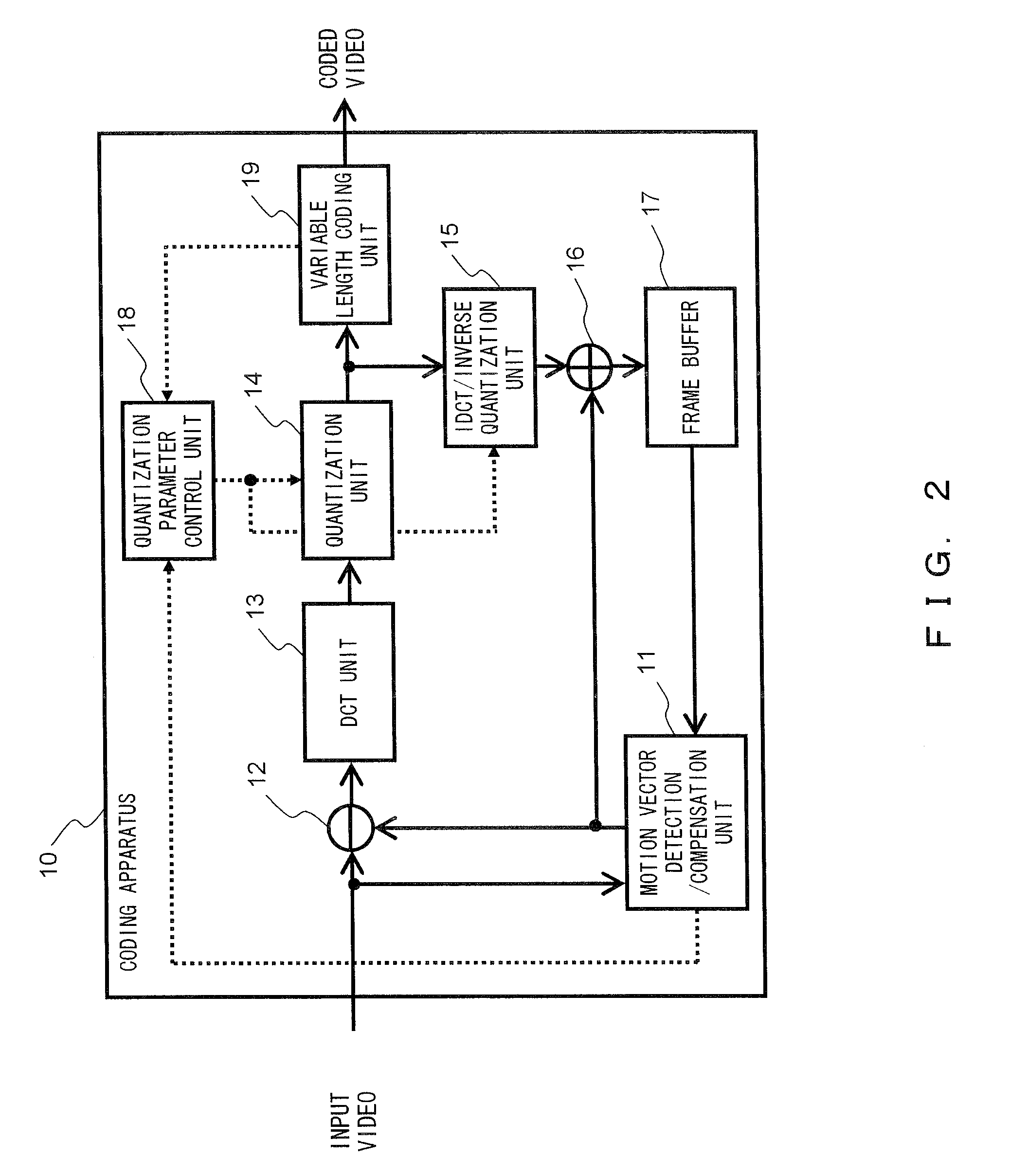Video coding apparatus
- Summary
- Abstract
- Description
- Claims
- Application Information
AI Technical Summary
Benefits of technology
Problems solved by technology
Method used
Image
Examples
Embodiment Construction
[0041]The first description is of an outline of an embodiment according to the present invention.
[0042]In the case where a brightness component is uniform with a texture existing only in a color difference component in a certain small block within a screen, the prediction accuracy of a motion vector degrades. Since the brightness component is uniform in this event, a degradation of prediction accuracy of the motion vector creates a small prediction error accumulation value of the brightness component. Meanwhile, the prediction error accumulation value of the color difference component is relatively large as compared to that of the brightness component.
[0043]Accordingly, an embodiment of the present invention is configured to calculate a ratio of a prediction error accumulation value of a brightness component to a prediction error accumulation value of a color difference component as an indicator of prediction accuracy of a motion vector. When the indicator indicates a degradation of...
PUM
 Login to View More
Login to View More Abstract
Description
Claims
Application Information
 Login to View More
Login to View More - R&D
- Intellectual Property
- Life Sciences
- Materials
- Tech Scout
- Unparalleled Data Quality
- Higher Quality Content
- 60% Fewer Hallucinations
Browse by: Latest US Patents, China's latest patents, Technical Efficacy Thesaurus, Application Domain, Technology Topic, Popular Technical Reports.
© 2025 PatSnap. All rights reserved.Legal|Privacy policy|Modern Slavery Act Transparency Statement|Sitemap|About US| Contact US: help@patsnap.com



